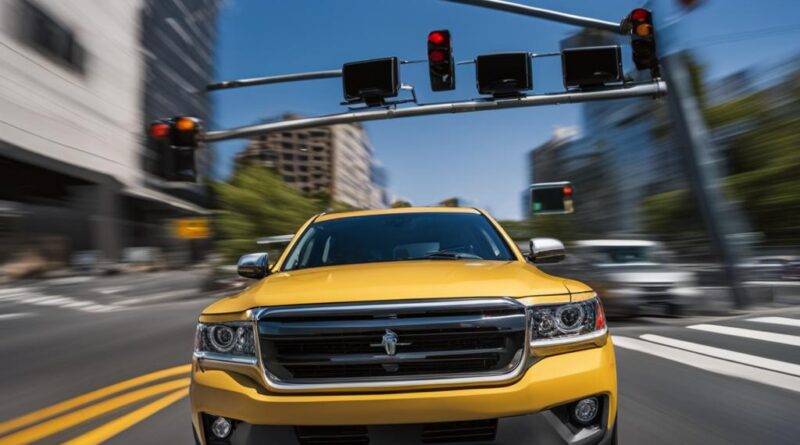Guidelines on How to Win a Left Turn Accident – Essential Tips
Left turn accidents can be challenging and potentially dangerous. To win a left turn accident case, it is crucial to understand the basics of left turns, fault determination, the prevalence of these accidents, and the laws governing left turns in California. In addition, key strategies and evidence can greatly impact the outcome of a left turn accident case. By following the guidelines and tips provided in this article, individuals involved in left turn accidents can increase their chances of achieving a favorable outcome in their case.
Key Takeaways:
- Understanding the basics of left turns is essential for safe driving.
- California follows a comparative negligence system in determining fault in left turn accidents.
- Left-hand turn accidents account for a significant number of road accidents.
- California’s laws prioritize the right-of-way and safety during left turns.
- Collecting appropriate evidence and seeking legal advice are crucial in winning a left turn accident case.
The Basics of Left Turns
When making a left turn, it is crucial to follow fundamental practices to ensure safety on the road. By adhering to these practices, drivers can significantly reduce the risk of accidents during left turns.
1. Checking for Oncoming Traffic
Prior to making a left turn, drivers should carefully check for oncoming traffic. This involves looking both ways to ensure that there are no vehicles approaching from the opposite direction. It is important to take into account the speed and distance of oncoming traffic before proceeding with the turn.
2. Using the Turn Signal
Using the turn signal is essential when making a left turn. By activating the left turn signal, drivers can indicate their intention to turn and alert other road users of their actions. This allows oncoming traffic, pedestrians, and bicyclists to anticipate the upcoming turn and adjust their movements accordingly.
3. Yielding to Pedestrians and Bicyclists
Yielding to pedestrians and bicyclists is a critical part of making a left turn safely. Drivers must give priority to pedestrians and bicyclists who are crossing the intersection or the designated crosswalk. It is important to exercise caution and patience while waiting for pedestrians and bicyclists to clear the path before proceeding with the left turn.
Following these fundamental practices of checking for oncoming traffic, using the turn signal, and yielding to pedestrians and bicyclists can help ensure a safer left turn maneuver for drivers and all other road users.
| Fundamental Practices for Left Turns | Importance |
|---|---|
| Checking for Oncoming Traffic | Ensures safe navigation and avoids collisions |
| Using the Turn Signal | Alerts other road users of the intended turn |
| Yielding to Pedestrians and Bicyclists | Prioritizes the safety of vulnerable road users |
Understanding Fault in Left Turn Accidents
In the event of a left turn accident, determining fault can be a complex process. In California, the driver making the left turn is typically presumed to be at fault due to the requirement to yield the right of way to oncoming traffic. However, there are exceptions to this presumption. For example, if the oncoming driver is speeding or violating traffic laws, they may share the fault or be solely responsible for the accident. It is important to note that California follows a comparative negligence system, which means that even if a driver is partially at fault, they can still recover damages, although the amount may be reduced by their percentage of fault.
Understanding California law regarding fault determination in left turn accidents is crucial for both drivers and their legal representation. By familiarizing themselves with the nuances of the law, individuals involved in left turn accidents can better navigate the legal process and ensure that their rights are protected.
In cases where fault is disputed, it is essential to gather evidence to support a favorable outcome. This may include eyewitness testimonies, photographs or video footage of the accident scene, and any other relevant documentation. Consulting with an experienced attorney who specializes in personal injury cases can also provide valuable guidance and representation throughout the legal proceedings.
Comparative Negligence System in California
Under California’s comparative negligence system, fault is assigned based on the degree of negligence on each party’s part. If it is determined that both drivers contributed to the accident, their respective percentages of fault will be assessed. For example, if one driver is found to be 70% at fault and the other driver is 30% at fault, the damages awarded will be reduced by their respective percentages. However, even if a driver is found to be more than 50% at fault, they can still recover damages, albeit reduced by their degree of fault.
Table: Comparative Negligence in Left Turn Accidents in California
| Percentage of Fault | Recoverable Damages |
|---|---|
| 0-50% | Full damages can be recovered |
| 51-99% | Damages will be reduced by the percentage of fault |
| 100% | No damages can be recovered |
It is important to note that fault determination can vary on a case-by-case basis, depending on the specific circumstances of the accident. Seeking legal advice and representation from a qualified attorney is crucial to ensure that all relevant factors are considered and that the injured party’s rights are protected throughout the legal proceedings.
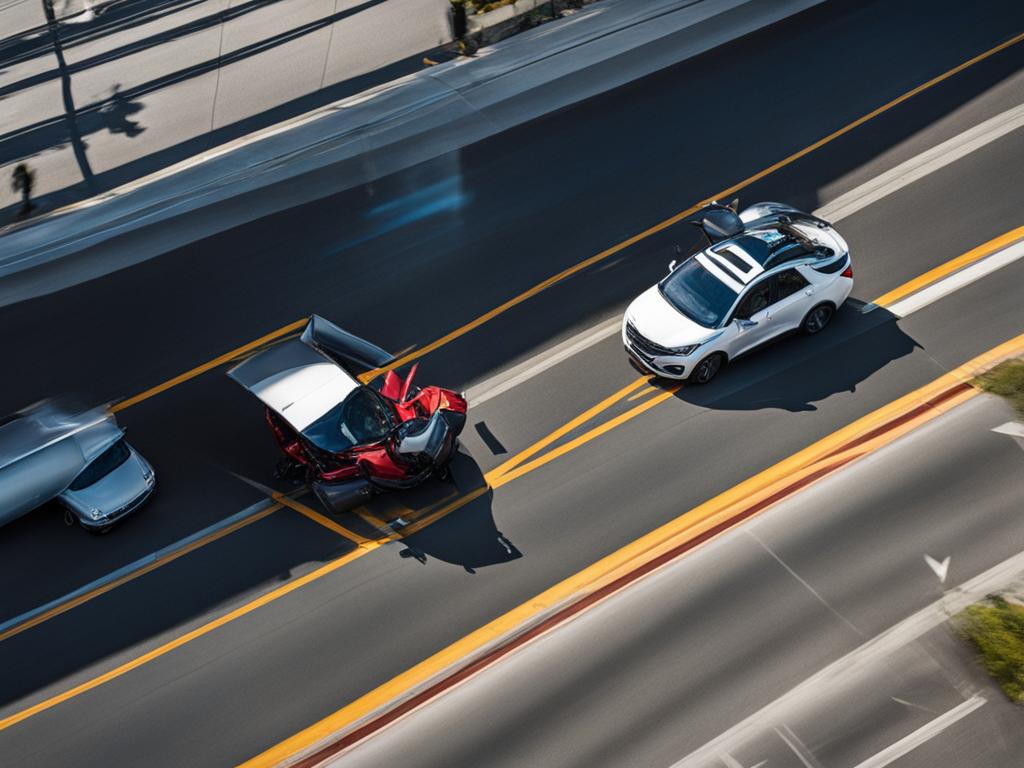
By understanding fault determination in left turn accidents and the comparative negligence system in California, individuals involved in such accidents can navigate the legal process with greater confidence and increase their chances of achieving a favorable outcome in their case.
The Prevalence of Left-Hand Turn Accidents
Left-hand turn accidents are a common occurrence on the roads, accounting for a high accident rate of up to 22% of all vehicular accidents. These accidents can have severe consequences for the drivers involved, as well as pedestrians and other road users. Understanding the causes behind left-hand turn accidents is crucial for promoting safer driving practices and implementing interventions to reduce such incidents.
Several factors contribute to the prevalence of left-hand turn accidents. Limited visibility plays a significant role, especially at busy intersections where multiple lanes intersect. This limited visibility can lead to misjudgment of speed and distance, making it difficult for drivers to accurately gauge the movements of oncoming vehicles. In addition, distracted driving is a common cause of left-hand turn accidents, with drivers being preoccupied with their phones, navigation systems, or other distractions instead of focusing on the road.
Furthermore, complex intersection dynamics can also contribute to left-hand turn accidents. Intersections with multiple turning lanes and different traffic signals can be confusing for drivers, increasing the likelihood of errors during left turns. The combination of these factors creates an environment where left-hand turn accidents are more likely to occur, highlighting the need for increased awareness and caution when making left turns.
Table: Causes of Left-Hand Turn Accidents
| Cause | Description |
|---|---|
| Limited Visibility | Poor visibility at intersections due to obstacles, weather conditions, or traffic congestion. |
| Misjudgment of Speed and Distance | Difficulty in accurately assessing the speed and distance of oncoming vehicles. |
| Distracted Driving | Driver distraction leading to reduced focus on the road and other vehicles. |
| Complex Intersection Dynamics | Confusing intersection layouts, multiple turning lanes, and different traffic signals. |
California’s Law on Left Turns
When it comes to left turns, California has specific regulations in place to ensure the safety of all road users. It is important to understand the key aspects of California law regarding left turns, including right-of-way, judgment of safety, and the protection of pedestrians.
According to California Vehicle Code Section 21801(a), drivers intending to make a left turn must yield the right-of-way to oncoming vehicles. This means that if you are making a left turn, you must wait for a safe gap in oncoming traffic before proceeding. Prioritizing safety and exercising caution are essential.
California law also emphasizes the importance of protecting pedestrians. Pedestrians have the right-of-way in crosswalks, and drivers must yield to them. It is crucial to be aware of pedestrian laws and to always prioritize their safety when making a left turn.
| California Law on Left Turns | Description |
|---|---|
| Right-of-Way | Drivers intending to make a left turn must yield the right-of-way to oncoming vehicles. |
| Judgment of Safety | Drivers should exercise judgment of safety when making a left turn, ensuring that it is safe to proceed without endangering others. |
| Protection of Pedestrians | Pedestrians have the right-of-way in crosswalks, and drivers must yield to them to ensure their safety. |
| Exceptions to Fault Determination | In certain situations, fault determination in left turn accidents can vary, such as when the oncoming driver is speeding or violating traffic laws. |
It is crucial to have a thorough understanding of the specific laws governing left turns in California to ensure compliance and promote safe driving practices.
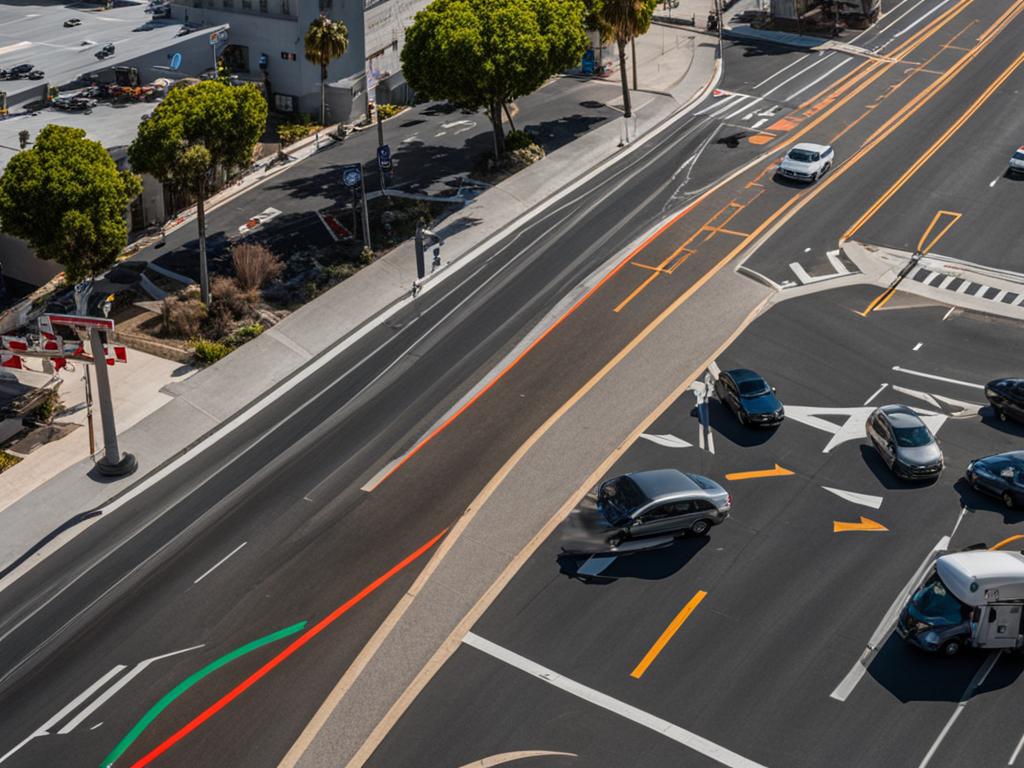
Key Strategies and Evidence to Win a Left Turn Accident Case
Building a strong case to win a left turn accident case involves several key strategies and gathering appropriate evidence. By following these strategies, individuals involved in left turn accidents can significantly enhance their chances of achieving a favorable outcome in their case.
Gather Eyewitness Testimonies
One crucial strategy is to collect eyewitness testimonies. Eyewitnesses can provide valuable accounts of the accident, including details about the actions and behaviors of both drivers involved. Their statements can corroborate your version of events and strengthen your case when presenting evidence to insurers or in court. It is essential to promptly gather contact information and statements from any witnesses at the scene.
Document the Accident Scene
Documenting the accident scene through photographs is another vital strategy. Take clear and detailed pictures of the vehicles involved, the surrounding area, and any relevant road conditions or signage. These photographs can serve as crucial evidence to support your version of events and demonstrate the extent of damages incurred. Additionally, make sure to document any visible injuries you or your passengers have sustained.
Seek Immediate Medical Attention
Seeking immediate medical attention after a left turn accident is not only crucial for your well-being but also for strengthening your case. Even if you initially feel fine, some injuries may not manifest symptoms right away. By seeking medical attention, you not only prioritize your health but also establish a documented medical record that links your injuries to the accident.
Obtain a Police Report
Obtaining a police report is another essential step. Contact the authorities and ensure that an officer is dispatched to the scene of the accident. The police report will include valuable information, such as the officer’s observations, statements from involved parties and witnesses, and a preliminary determination of fault. This official document can carry significant weight when negotiating with insurance companies or presenting your case in court.
Consult with an Experienced Attorney
Finally, consulting with an experienced attorney specializing in personal injury and car accident cases is highly recommended. An attorney can navigate the complexities of the legal system, provide expert advice, and advocate for your rights. They can analyze the strength of your case, guide you through the claims process, negotiate with insurers, and represent you in court if necessary.
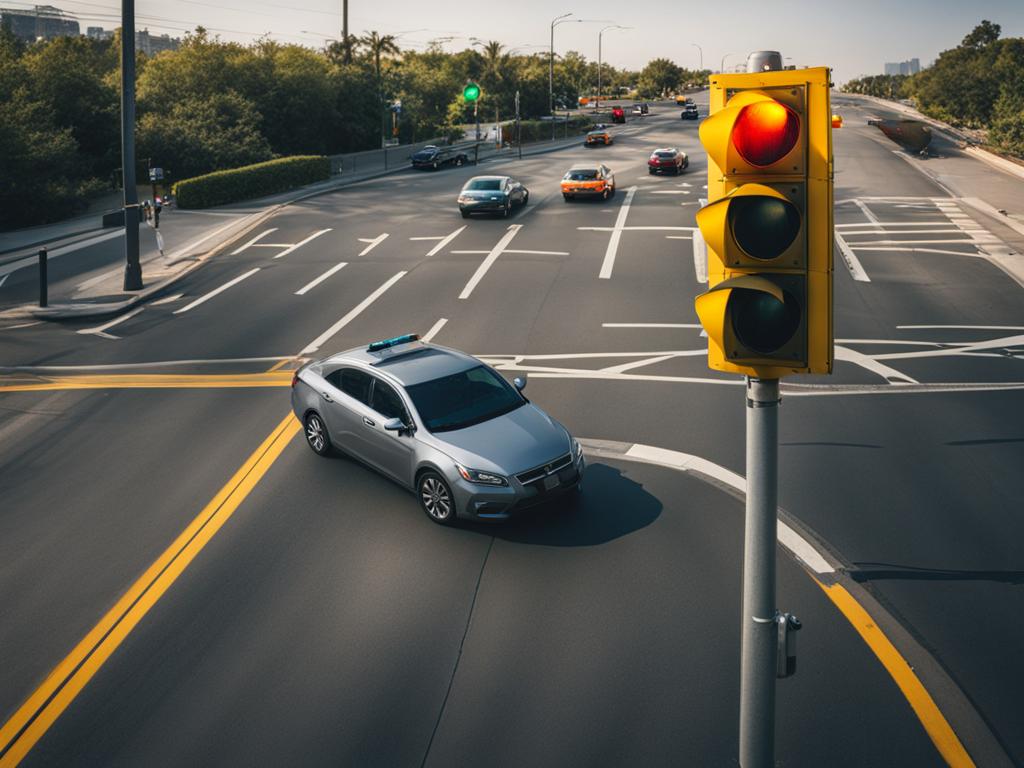
| Key Strategies to Win a Left Turn Accident Case | Evidence to Gather |
|---|---|
| Gather eyewitness testimonies | Eyewitness statements, contact information |
| Document the accident scene | Photographs of vehicles, road conditions, injuries |
| Seek immediate medical attention | Medical records linking injuries to the accident |
| Obtain a police report | Official police report with observations and statements |
| Consult with an experienced attorney | Legal representation, expert advice |
Left-Turn Accidents and Motorcycles
Left-turn accidents involving motorcycles can have severe consequences due to the inherent vulnerability of motorcyclists on the road. Motorcycles lack the protective features of a car, making riders more susceptible to serious injuries during collisions. It is essential for all road users to prioritize safe driving practices to minimize the risk of left-turn accidents involving motorcycles.
Motorcycles, with their smaller size and greater maneuverability, can sometimes be more difficult for drivers to spot, especially when making left turns at intersections. Drivers should exercise extra caution and always check for motorcycles before executing a left turn. In turn, motorcyclists should also take proactive measures to enhance their visibility on the road, such as using reflective gear and ensuring their headlights are always on.
By raising awareness of the vulnerability of motorcyclists and promoting a culture of mutual respect on the road, we can work towards reducing the occurrence of left-turn accidents involving motorcycles. Safe driving practices, adhering to the right-of-way rules, and maintaining a vigilant attitude can help create a safer environment for all road users.
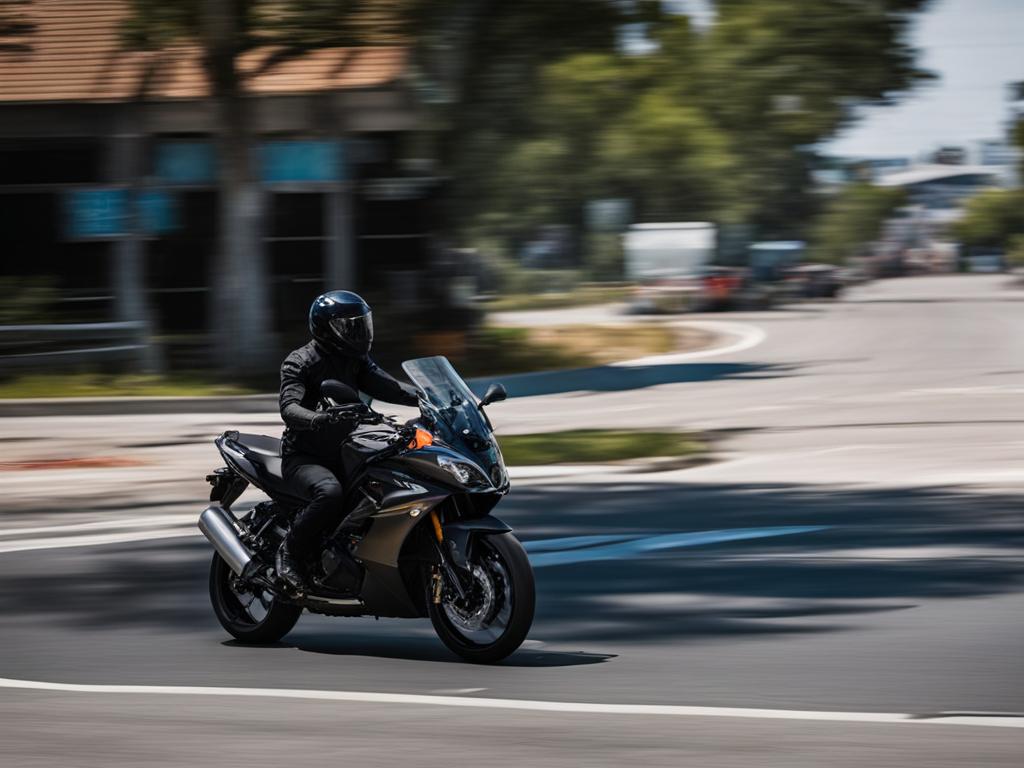
Left-Turn Accidents and Pedestrians
Left-turn accidents involving pedestrians can occur in crosswalks and intersections. Pedestrians always have the right-of-way in a crosswalk, but the laws regarding right-of-way differ among states. It is essential for both drivers and pedestrians to be aware of and adhere to pedestrian laws to prevent left-turn accidents and ensure the safety of all road users.
When approaching a crosswalk or intersection, drivers should be vigilant and prepared to yield to pedestrians. They should come to a complete stop if necessary and only proceed with the left turn when it is safe and all pedestrians have cleared the crosswalk.
Pedestrians, on the other hand, should exercise caution and follow traffic signals when crossing the road. They should use designated crosswalks whenever possible and make eye contact with drivers to ensure they are seen before crossing.
Examples of Pedestrian Laws:
- In California, pedestrians have the right-of-way in both marked and unmarked crosswalks. Drivers must yield to pedestrians and come to a complete stop.
- In New York, pedestrians have the right-of-way in marked and unmarked crosswalks. Drivers must yield to pedestrians and come to a complete stop.
- In Texas, pedestrians have the right-of-way in marked and unmarked crosswalks. Drivers must yield to pedestrians and come to a complete stop.
| State | Pedestrian Right-of-Way Laws |
|---|---|
| California | Pedestrians have the right-of-way in both marked and unmarked crosswalks. Drivers must yield to pedestrians and come to a complete stop. |
| New York | Pedestrians have the right-of-way in marked and unmarked crosswalks. Drivers must yield to pedestrians and come to a complete stop. |
| Texas | Pedestrians have the right-of-way in marked and unmarked crosswalks. Drivers must yield to pedestrians and come to a complete stop. |
By understanding and following pedestrian laws, both drivers and pedestrians can contribute to a safer road environment and help prevent left-turn accidents.
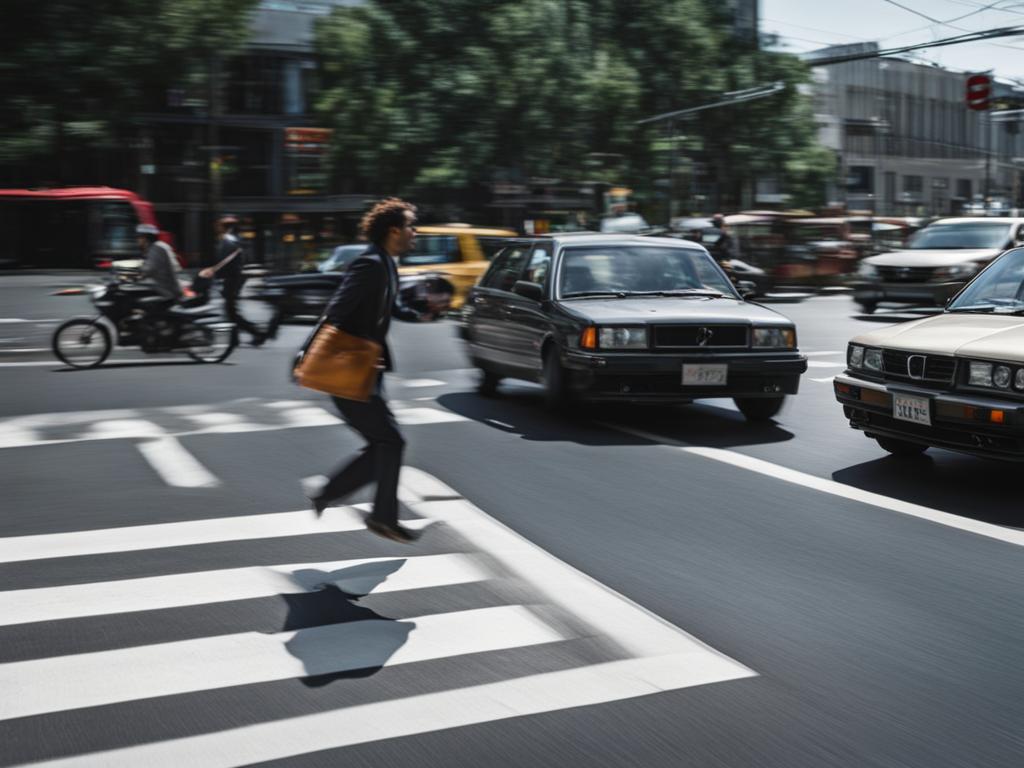
Conclusion
To achieve a favorable outcome in a left turn accident case, it is crucial to understand the guidelines and tips outlined in this article. By following these strategies and gathering appropriate evidence, individuals involved in such accidents can increase their chances of winning their case.
First and foremost, it is essential to have a thorough understanding of the basics of left turns, fault determination, and the prevalence of left-hand turn accidents. This knowledge will help in building a strong case and presenting compelling arguments.
Furthermore, it is important to adhere to the specific laws governing left turns in California. Being aware of the right-of-way rules, judgment of safety, and protection of pedestrians will strengthen the position of the party seeking justice.
Lastly, seeking immediate medical attention, documenting the accident scene, obtaining a police report, and consulting with an experienced attorney are key strategies that can make a significant impact on the outcome of a left turn accident case.
By applying these guidelines and understanding the complexities of left turn accidents, individuals can navigate the legal process with confidence and work towards achieving a favorable outcome in their case.
FAQ
How can I increase my chances of winning a left turn accident case?
To increase your chances of winning a left turn accident case, it is important to understand the basics of left turns, fault determination, and the laws governing left turns in your state. Collecting key evidence, such as eyewitness testimonies and accident scene documentation, can also greatly impact the outcome of your case. Consulting with an experienced attorney is also recommended.
What are the fundamental practices for making a left turn safely?
The fundamental practices for making a left turn safely include checking for oncoming traffic, using your turn signal, and yielding to pedestrians and bicyclists. By following these practices, you can significantly reduce the risk of accidents during left turns.
How is fault determined in left turn accidents?
In California, the driver making the left turn is often presumed to be at fault due to the requirement to yield the right of way to oncoming traffic. However, there are exceptions, such as when the oncoming driver is speeding or violating traffic laws. California also follows a comparative negligence system, which means that even if a driver is partially at fault, they can still recover damages, albeit reduced by their percentage of fault.
What is the prevalence of left-hand turn accidents?
Left-hand turn accidents account for up to 22% of all vehicular accidents. Factors such as limited visibility, misjudgment of speed and distance, distracted driving, and complex intersection dynamics contribute to the high accident rate. Understanding the prevalence and causes of these accidents is crucial for promoting safer driving practices and implementing interventions to reduce such incidents.
What are the specific laws governing left turns in California?
According to California Vehicle Code Section 21801(a), drivers intending to make a left turn must yield the right-of-way to oncoming vehicles and prioritize safety. This law also emphasizes the judgment of safety and the protection of pedestrians. However, there are exceptions to fault determination, such as when the oncoming driver is speeding or violating traffic laws.
What strategies and evidence can help win a left turn accident case?
Building a strong case involves collecting eyewitness testimonies, documenting the accident scene through photographs, seeking immediate medical attention, obtaining a police report, and consulting with an experienced attorney. These actions can greatly enhance the chances of prevailing in a left turn accident case.
How do left-turn accidents affect motorcycles?
Left-turn accidents involving motorcycles can result in severe injuries due to the lack of protection for motorcyclists. Motorcyclists are more vulnerable in these accidents, and safe driving is the responsibility of all road users. Understanding the dynamics of left-turn accidents involving motorcycles is crucial for promoting safer driving practices and reducing the occurrence of such accidents.
What should drivers and pedestrians know about left-turn accidents?
Left-turn accidents involving pedestrians can occur in crosswalks and intersections. Pedestrians always have the right-of-way in a crosswalk, but the laws regarding right-of-way differ among states. It is essential for both drivers and pedestrians to be aware of and adhere to pedestrian laws to prevent left-turn accidents and ensure the safety of all road users.

